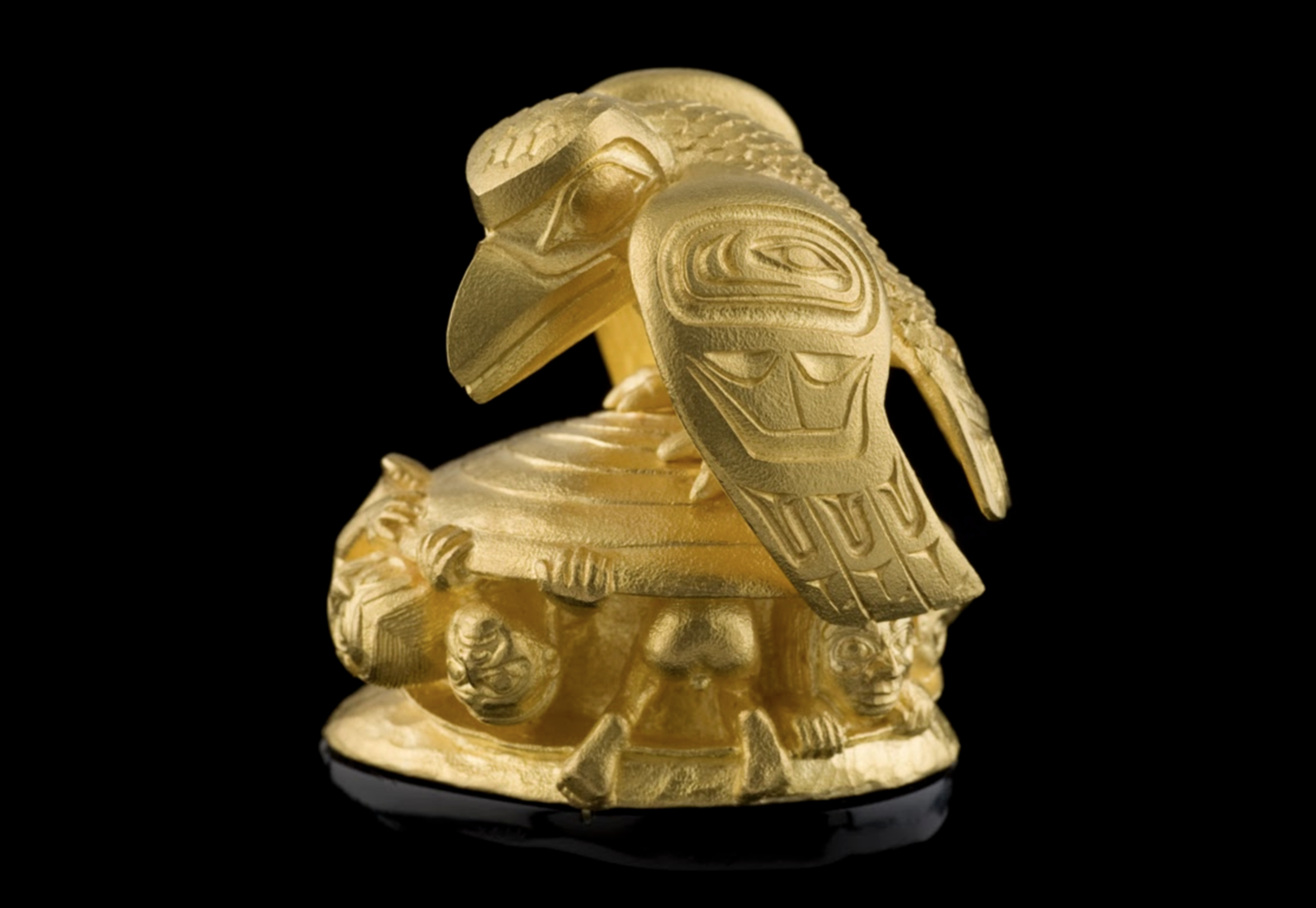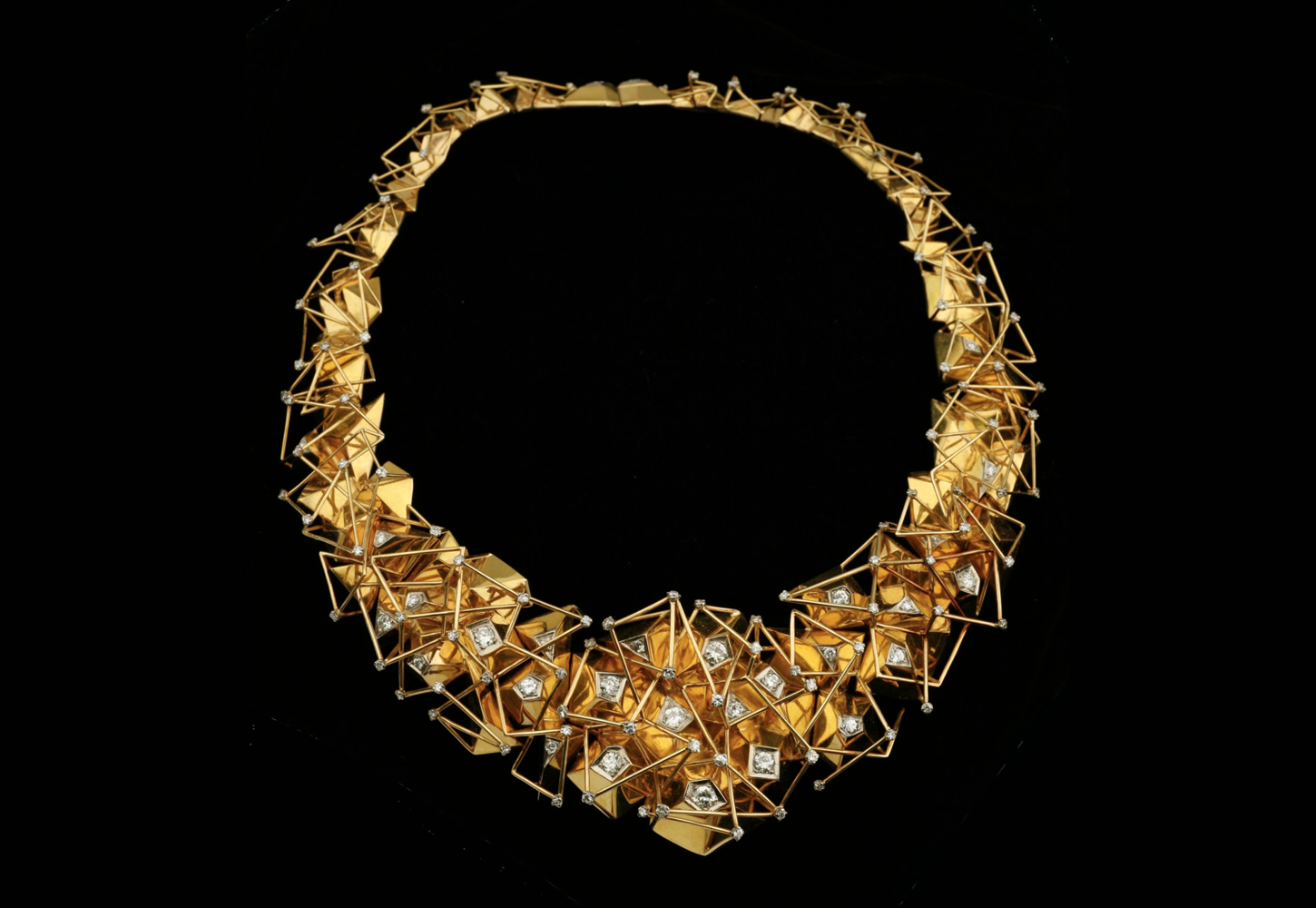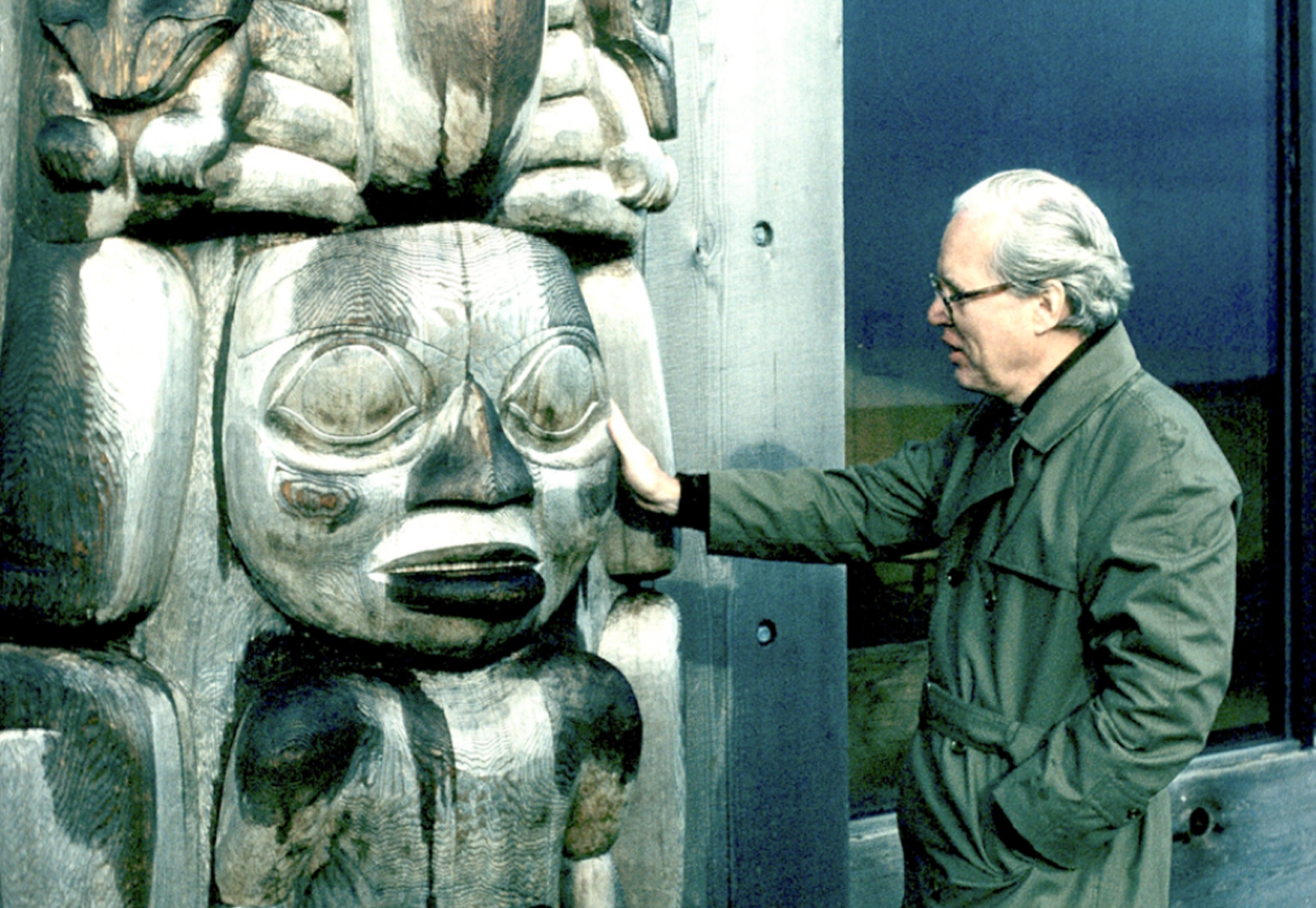Who was Bill Reid?
“Joy is a well-made object, equaled only by the joy of making it” - Bill Reid, 1988
Bill Reid (1920-1998) was an acclaimed master goldsmith, carver, sculptor, writer, broadcaster, mentor and community activist. Reid was born in Victoria, BC to a Haida mother and an American father with Scottish German roots, and only began exploring his Haida roots at the age of 23. This journey of discovery lasted a lifetime and shaped Reid's artistic career.
The Bill Reid Gallery of Northwest Coast Art was created in 2008 to honour his legacy and celebrate the diverse indigenous cultures of the Northwest Coast. Bill Reid infused Haida traditions with his own modernist aesthetic to create both exquisitely small as well as monumental work that captured the public's imagination, and introduced a timeless vocabulary to the modern world.
Reid became a pivotal force in building bridges between Indigenous people and other peoples. Through his mother, he was a member of the Raven clan from T'aanuu with the wolf as one of his family crests. Raven is known as a mischievous trickster, who also plays an important part in transforming the world. Many of these traits matched Bill Reid's personality. In 1986, Reid was presented with the Haida name Yaahl Sgwansung, meaning The Only Raven.
A Bill Reid Timeline
- 1920
Born January 12 in Victoria, BC, the first child of Sophie Gladstone Reid and William Ronald Reid
- 1939
Began work as a radio announcer, first in Kelowna, BC, then in Ontario and Quebec, and later in Vancouver
- 1943
First visit to Haida Gwaii since early childhood
- 1944
Married Mabel "Binkie" van Boyen. Conscripted into the Canadian Army for one year
- 1948
Joined the CBC in Toronto as a radio broadcaster. Studied jewelry at Ryerson Institute of Technology, Toronto
- 1950
Birth of daughter, Amanda Reid, in Toronto
- 1951
Returned to Vancouver. Continued to work for CBC and also created jewelry
- 1954
Joined Wilson Duff of the Provincial Museum and Harry Hawthorn of UBC on expedition to Haida Gwaii to salvage classical Haida poles. Received the name Iljuwas (Manly One, Princely One)
- 1955
Adopted (with his wife) Raymond Cross, a Haida relative, as their son
- 1956
Worked with Mungo Martin
- 1957
Second expedition to Haida Gwaii. Separated from his first wife
- 1960
Brief second marriage to Ella Gunn
- 1962
Completed Haida village project at UBC with assistance of Doug Cranmer. Established jewelry studio in Vancouver with Toni Cavelti, but later moved on his own.
- 1967
Collaborated on Arts of the Raven exhibit at the Vancouver Art Gallery
- 1968-69
Moved to London on a Canada Council fellowship
- 1969-73
Moved to Montreal and started a jewelry workshop
- 1973
Diagnosed with Parkinson’s Disease. Returned to Vancouver, which became his home for the next 25 years. Received the name Kihlguulins (Golden Voice)
- 1976-1978
Created Skidegate heraldic pole (1976-78), the first pole to be raised in his mother’s village in a century
- 1980
Completed The Raven and the First Men – monumental sculpture at the Museum of Anthropology at UBC
- 1981
Marriage to Martine de Widerspach-Thor, whom he had met in 1975. Death of his adopted son Raymond Cross.
- 1984
Created Chief of the Undersea World bronze sculpture for the Vancouver Aquarium.
- 1985
Created Mythic Messengers for Teleglobe Canada
- 1986
Commissioned by the Bank of BC to create Lootaas (Wave Eater), a full size canoe for Expo 86. Received the name Yaahl Sgwansung (The Only Raven)
- 1986-1991
Created The Spirit of Haida Gwaii, The Black Canoe at Canadian Embassy in Washington, DC
- 1994
Received the Order of BC; National Aboriginal Lifetime Achievement Award
- 1996
Created The Spirit of Haida Gwaii, The Jade Canoe, Vancouver International Airport
- 1998
Bill Reid passed away on March 13 and his ashes were interred in July at T’aanuu, his grandmother’s village on Haida Gwaii
- 2004
The Government of Canada featured four of Bill Reid’s artworks on the $20 bill
Three Phases of Bill Reid
Dr. Martine J. Reid, who is conducting research for Bill Reid's Catalogue Raisonne, has discussed his career in three phases: Pre-Haida (1948-1951; the artist lived in Toronto), Haida (1952-1967; the artist was back in Vancouver), and Beyond Haida (1968-1998; the artist lived in London, Montreal, and Vancouver).

(1948-1951)
Pre-Haida
During his first phase, at the age of 28 while a CBC broadcaster in Toronto, Reid learned the classic European jewelry trade, hoping one day to create bracelets such as those made by his grandfather, Charles Gladstone or other Haida relatives. Reid, who called himself "a maker of things" rather than an artist, was known to have said that he owed his accomplishments in his wide range of artistic expression to the skills that he had acquired from the jewelry trade.
Empowered with his new skills, Reid returned to Vancouver to establish himself as a modern jeweler. However, after a trip to Haida Gwaii in 1954 where he saw a pair of deeply carved bracelets engraved by his "genius great-great uncle", Charles Edenshaw, the world was not the same, to use Reid's words. These ornaments left an indelible impression on him.
When Reid began his career as a goldsmith, Haida style had lost much of its power due to the demoralizing effects of a century of colonization, disease, and culturally repressive Canadian laws. The vital essence of Haida style was no longer expressed. Reid searched early ethnographic publications and exhibitions in museum collections for exceptionally strong works executed by anonymous nineteenth century masters.

(1952-1967)
Haida
When Bill, the jeweler, started his second phase, he immersed himself into traditional Haida art. He began by making personal objects of adornment, adaptations from old crest and tattoo designs or identity symbols, some of which had originally been drawn by Charles Edenshaw, his great-great-uncle. In the recent Haida past, tattoo designs were strong symbolic statements about who their wearers were as individuals and as social entities.

(1968-1998)
Beyond Haida
Reid's third phase is marked by his return from London in '69, where he was studying museum collections while learning at the Central School of Design to master another ancient technique: the lost wax. He settled in Montreal for three years where he completed the Milky Way, an intricate gold and diamond necklace with detachable brooch. He also created important works, among them the iconic boxwood Raven and the First Men, and several three-dimensional gold boxes inspired by Haida mythology. He also began his multiple edition-pieces. After being diagnosed with Parkinson's disease, he returned to Vancouver in 1973 where he lived until his death in 1998.
Over the years Reids work moved towards greater complexity and increasingly three-dimensional creations, culminating in a series of gold repousse bracelets and three-dimensional hollowware. His visionary skills coupled with his mastery of the techniques enabled him to create powerful, three-dimensional jewelry works that were indeed deeply carved.
Reid's quest for understanding the essence and the roots of a unique art form led him to discover his own "Haidaness" and, in the process, restored much of the dynamic power, magic, and possibility to the art. In doing so he became the catalyst to empower a whole Nation.

